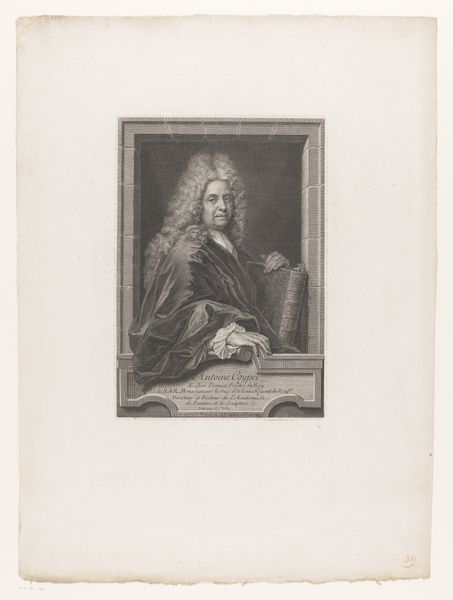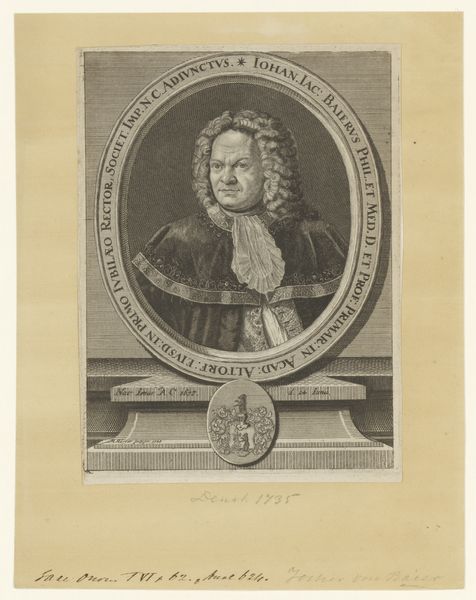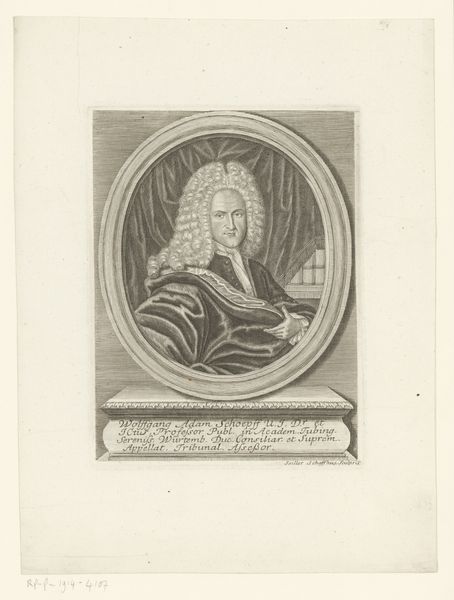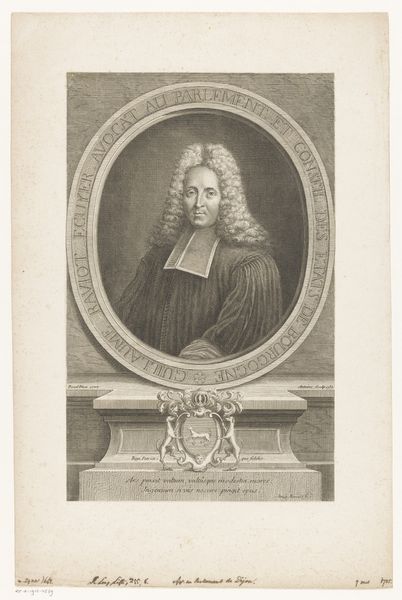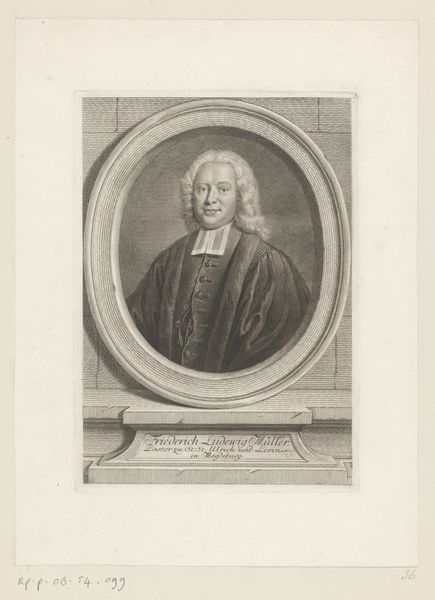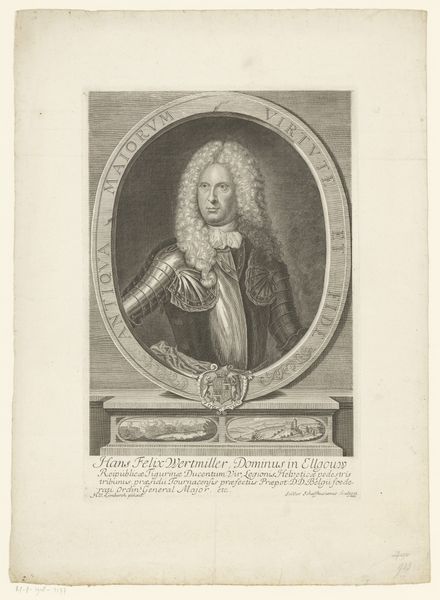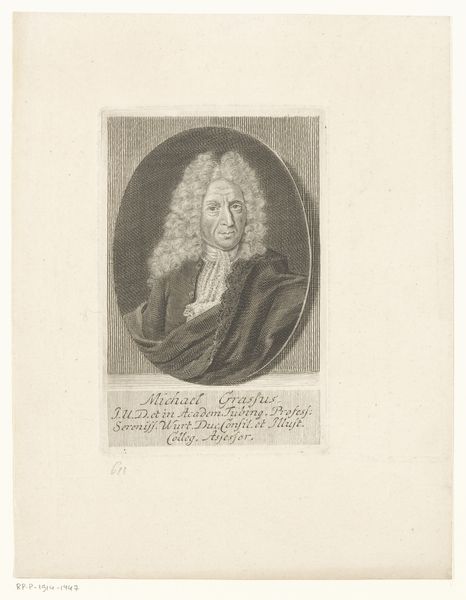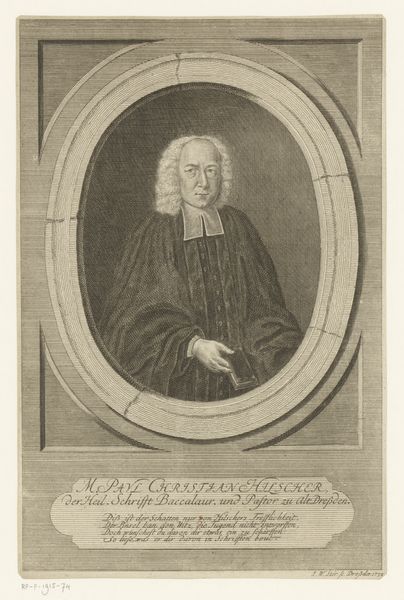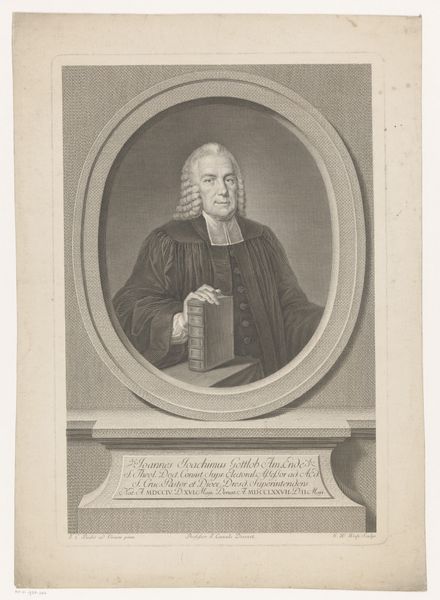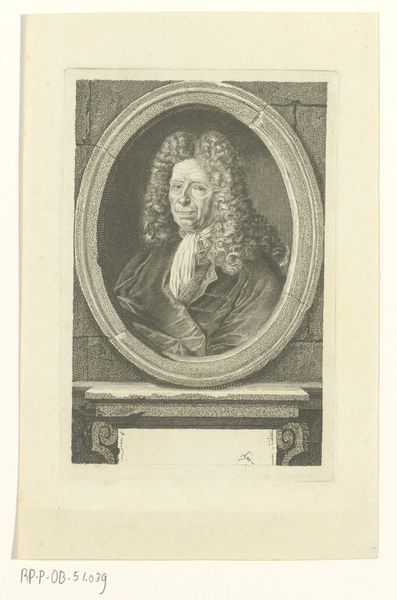
drawing, print, engraving
#
portrait
#
drawing
#
baroque
# print
#
old engraving style
#
engraving
Dimensions: height 377 mm, width 281 mm
Copyright: Rijks Museum: Open Domain
Editor: This is "Portrait of Pierre Gillet," a 1713 engraving by Pierre Drevet, housed in the Rijksmuseum. There's a striking formality about it – a man framed by stone and Latin inscription. What strikes you most when you look at it? Curator: It’s the persistent visual language of power and status that intrigues me. Consider the oval frame; it mimics classical cameos, linking Gillet to a lineage of esteemed figures from antiquity. The Latin inscription elevates him further through association with law and learning. Don't you find the visual weight of this calculated imagery overwhelming? Editor: I do, especially the stone framework! Does the imagery of stone suggest a kind of permanence or unshakeable authority? Curator: Precisely. Stone, as a symbol, roots Gillet not merely in his time, but intends to root him for eternity. Note the crest below – a personalized emblem furthering the statement of his legacy. These symbols, repeated throughout history, continuously reaffirm notions of power. What emotional effect do you think such symbolism had on viewers in the 18th century, versus its impact today? Editor: I imagine it resonated deeply then, reinforcing a hierarchical social order. Now, perhaps, we're more likely to dissect and question those power structures. It’s fascinating to see how symbolic language shifts with cultural perspectives. Curator: Indeed. And even more fascinating when you see how, despite the shifts, certain symbols continue to unconsciously shape our perceptions. Food for thought, isn't it? Editor: Absolutely. Thanks – this piece gives me a lot to consider about enduring imagery and its changing impact.
Comments
No comments
Be the first to comment and join the conversation on the ultimate creative platform.

